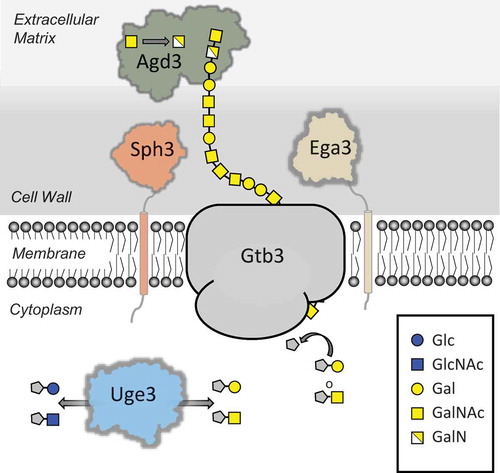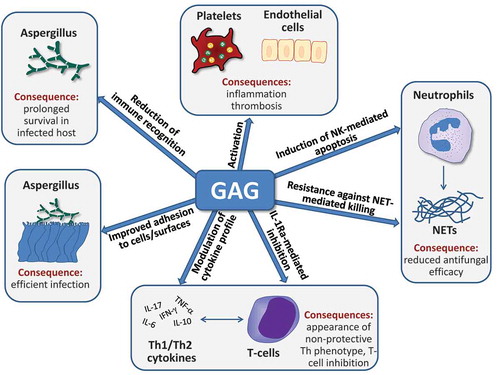Figures & data
Figure 1. GAG polysaccharide biosynthetic pathway. Schematic representation of the proteins involved in (i) production of the GAG activate sugar nucleotide precursors (Uge3), (ii) polymerization and transport across the membrane (Gtb3), and (iii) hydrolysis (Sph3/Ega3) and deacetylation (Adg3) of the mature polymer. Abbreviations: Glc, Glucose; GlcNAc, N-acetylglucosamine; Gal, Galactose, GalNAc, N-acetylglucosamine; GalN, Galactosamine. UDP is denoted by a grey pentagon.

Figure 2. Multiple potential roles of GAG during fungal infection. GAG is required for efficient adherence of A. fumigatus hyphae to host cells and surfaces and protects the fungal cell wall from immune recognition. Furthermore, it can activate platelets and endothelial cells and thus contribute to thrombosis during the pathogenesis of fungal infection. GAG reduces the antifungal capacity of neutrophils by two mechanisms, the induction of apoptosis and the conference of resistance against neutrophil extracellular traps (NET). Finally, T-cell responses to GAG include altered cytokine production as a consequence of GAG-dependent IL-1 receptor antagonist (IL-1Ra) production, leading to reduced Th1 and Th17 cytokine production. For further details, see text.

